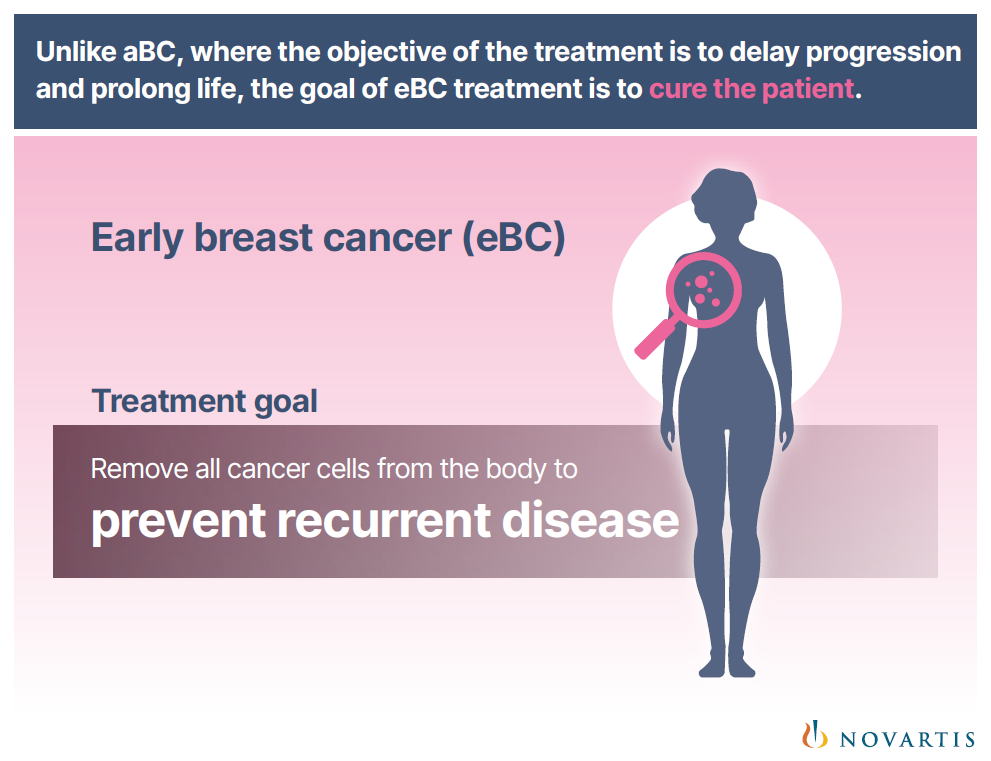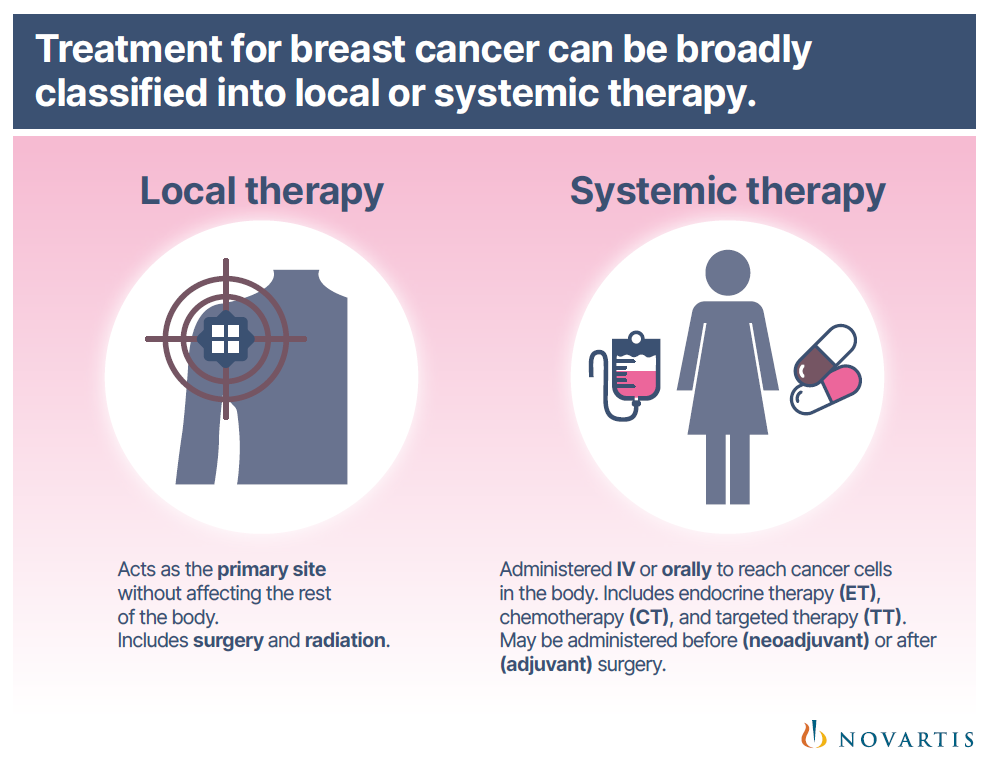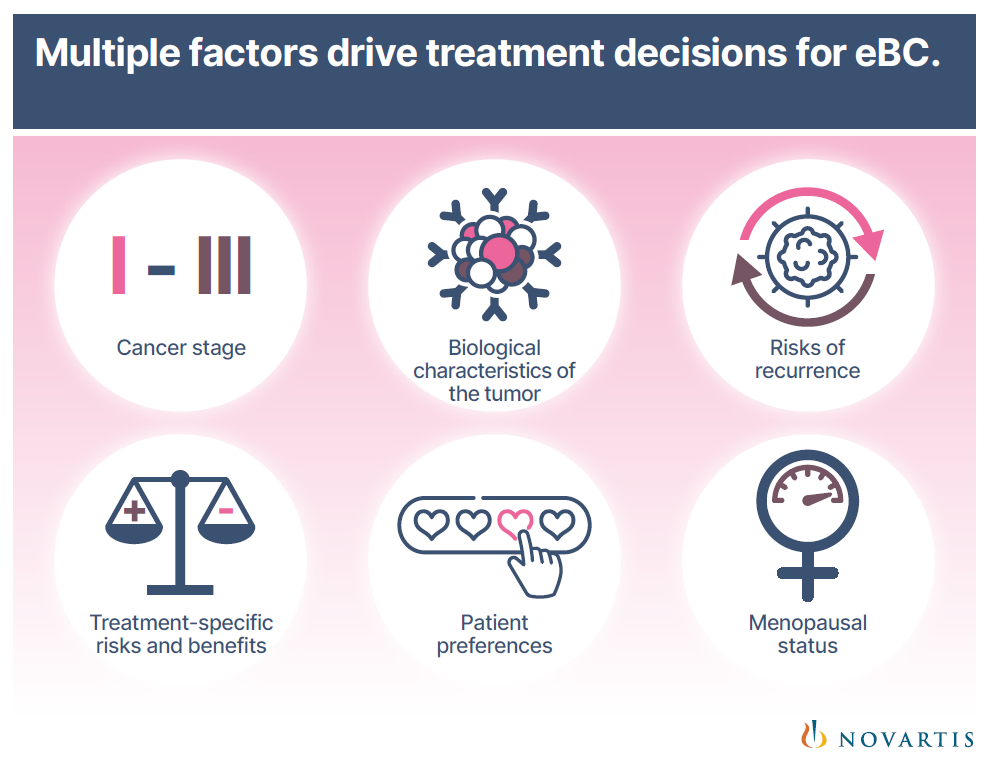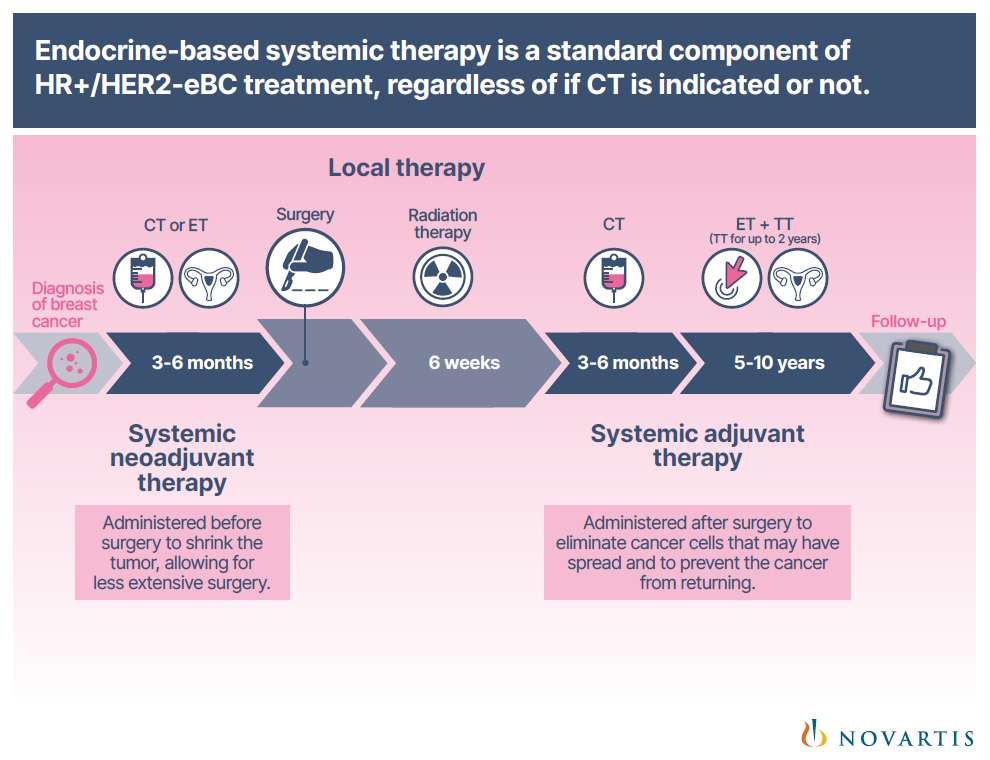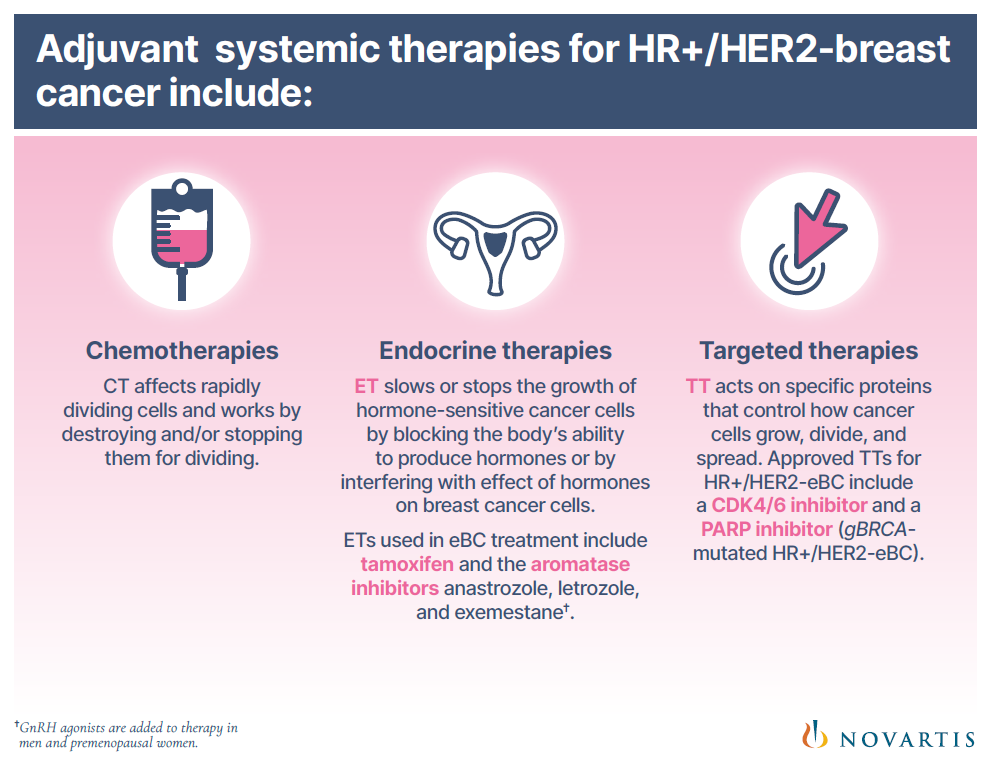Treatment
Unlike aBC where the objective of the treatment is to delay progression and prolong life, the goal of eBC treatment is to cure the patient.1,2
References: 1 and 2
Treatment for breast cancer can be broadly classified into local or systemic therapy.3
References: 3 and 4
Multiple factors drive treatment decisions for eBC.3
References: 3
Endorcrine-based systemic therapy is a standard component of HR+/HER2-eBC treatment, regardless of if CT is indicated or not.4
References: 4
Adjuvant systemic therapies for HR+/HER2- breast cancer include:
References: 4, 5, 6, and 7
CDK 4/6, cyclin-dependent kinase 4/6; eBC, early breast cancer; gBRCA, germline breast cancer gene;
HER2, human epidermal growth factor receptor 2; HR, hormone receptor; PARP, poly-ADP ribosepolymeras
- Irvin W, Muss HB, Mayer DK. Symptom management in metastatic breast cancer. Oncologist. 011;16(9):1203-1214.
- Scharl A, Kühn T, Papathemelis T, et al. The Right Treatment for the Right Patient - Personalised Treatment of Breast Cancer. Geburtshilfe Frauenheilkd. 2015;75(7):683-691.
- Cardoso F, Kyriakides S, Ohno S, et al. Early breast cancer: ESMO Clinical Practice Guidelines for diagnosis, treatment and follow-up†. Ann Oncol. 2019;30(8):1194-1220.
- American Cancer Society (ACS). Treating Breast Cancer. Atlanta, GA: January 2023:1-115.
- National Cancer Institute (NCI). NCI Dictionary of Cancer Terms. Bethesda, MD: U.S. National Institutes of Health (NIH); 2023.
- AstraZeneca. Press release. August 4, 2022.
- Tung N, Garber JE. PARP inhibition in breast cancer: progress made and future hopes. NPJ Breast Cancer. 2022;8(1):47.
BE2308303564
